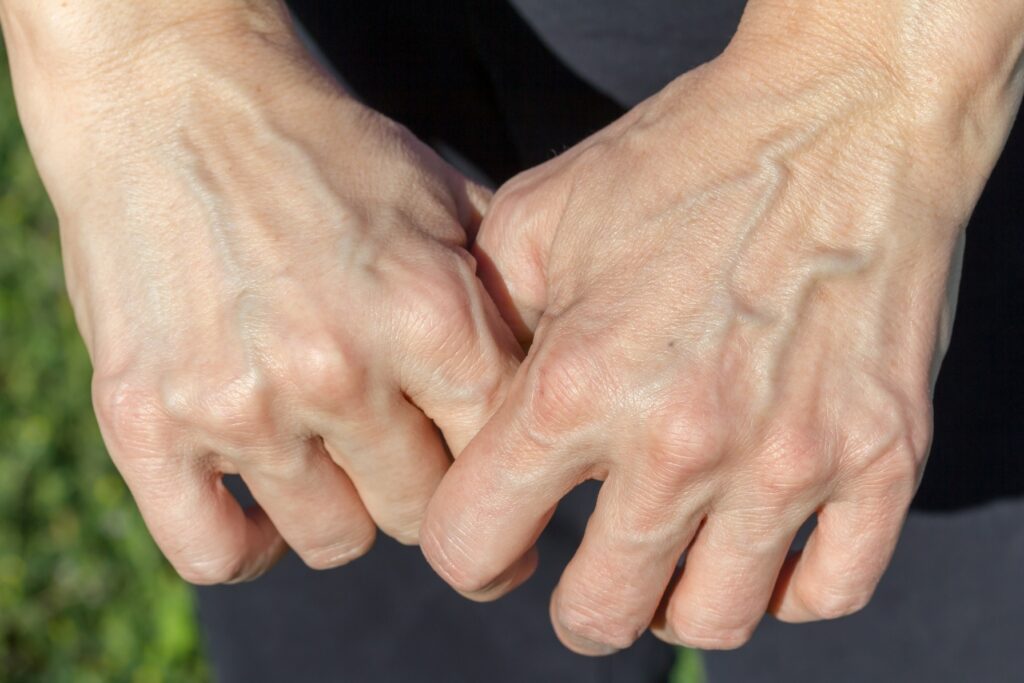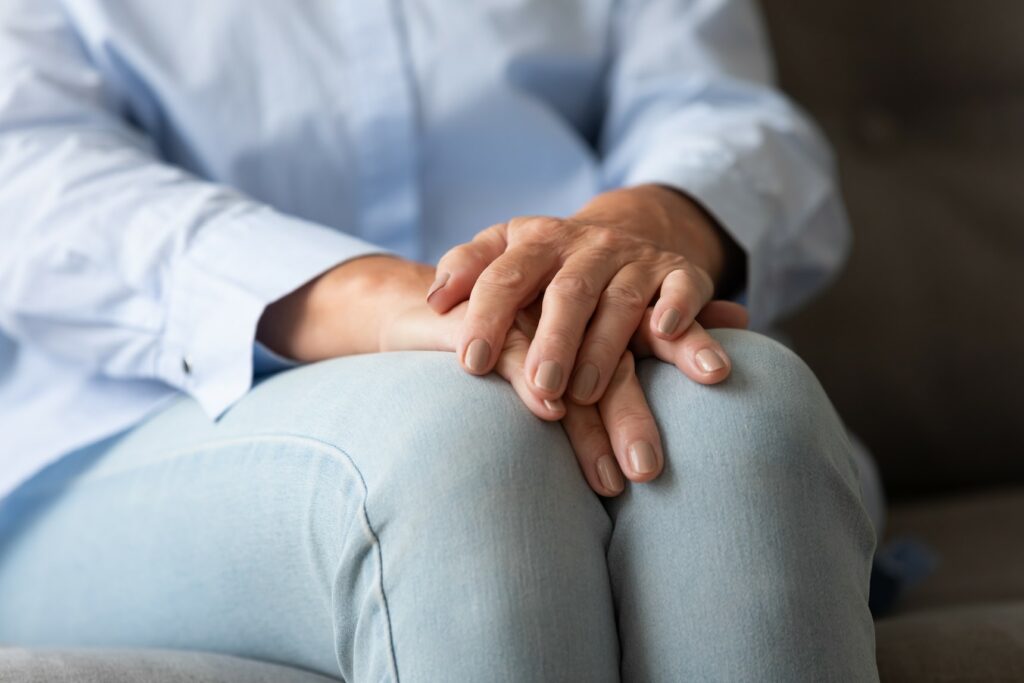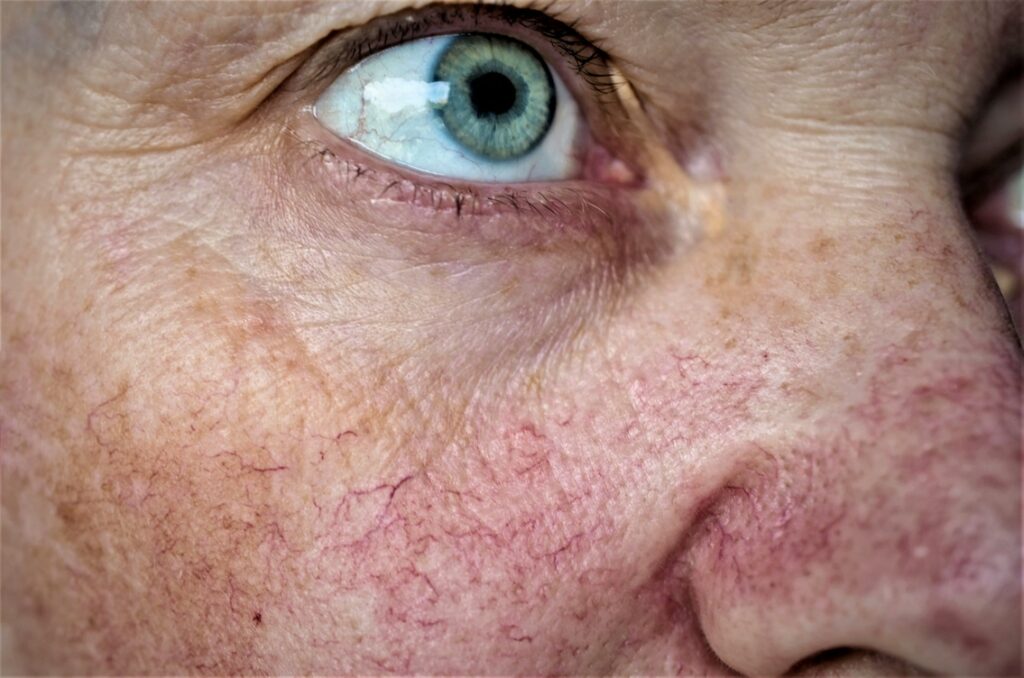When you hear the term “varicose veins”, chances are that you automatically think of the legs – causing those unsightly bulging or twisted blue-purple veins and swollen ankles, fatigue, aching, and other issues. While vein disease of the legs is by far the most common varicose vein issue experienced by women and men, protruding veins can occur elsewhere in the body as well and, if you experience this, it can be a cause of both symptomatic and aesthetic concern.
The role of the veins is to carry deoxygenated blood back to the heart (except for the pulmonary veins, which carry oxygenated blood from the lungs to the heart for subsequent transport to the rest of the body).
Many of us remember high school science experiments where we held our arms down by our sides for a few minutes and then observed the prominence of the veins in the back of our hands. We were then instructed to hold the arms above our heads for a minute or two and then observe the prominence of these veins disappearing. The purpose of this was to demonstrate the effect of gravity on the one-way valves in the veins of the arms.
In the upper extremities (the arms and hands), the veins, like those in the legs, need to, most of the time, work against gravity. This can create issues for some people as the valves within the veins can fail and the vein walls can weaken.
Should you be worried about varicose veins in the arms??
What Causes Swollen Hand and Arm Veins?
Not all swollen or bulging hand and arm veins are varicose. The prominent, protruding veins visible on the back of the hands in most of us, for example, are most often simply the result of relaxed and thinning skin which loses its elasticity with age. While they may be unsightly, they are not usually of any medical concern.
The likelihood of developing more noticeable veins in the backs of the hands or varicose veins in the arms can be influenced by a range of factors including:
- Advancing age – with age, the skin becomes thinner and loses its elasticity. The hand veins also become weaker and stiffer and are generally more prone to being damaged.
- Genetics – heredity plays a major role in developing bulging hand and arm veins. You may also be predisposed to developing spider veins or varicose veins.
- Having paler skin (as the blueish veins are more obvious under paler skin tones).
- Having a low percentage of body fat or being underweight – due to less “covering” to hide the superficial veins. Fat makes veins less visible and adds depth to the skin.
- Physical exercise, which increases arterial blood pressure. This makes the blood plasma pool around the muscles, which in turn results in muscular swelling and hardening. This temporarily pushes the veins closer to the skin’s surface where they are more noticeable. This phenomenon is seen much more in strenuous exercise and weightlifting, which can ultimately damage the vein valves and walls so that they ultimately do not return to normal after exercising – the problem then becomes permanent.
- Hot or humid weather – as the body tries to cool itself, the veins nearer the surface of the skin dilate to reduce heat and maintain normal body temperature. The excess blood rushing to these veins can weaken and damage them, causing them to work harder to function properly. This issue is much worse in summer.
- Hormones – menopause in particular can result in a greater likelihood of developing varicose veins.
- A prior injury to the hand or arm, especially an impact injury.
- Vascular disease such as Chronic Venous Insufficiency.
What Symptoms Accompany Bulging Hand and Arm Veins?
- Prominent blue or purple veins under the skin.
- Twisted, swollen, or bulging veins under the skin.
- Heaviness or aching in the arms – this can become chronic.
- Cramping, burning, throbbing pain in the hands and/or arms.
- Hand, wrist, or arm swelling.
- Itching, reddening, or other discolouration adjacent to prominent veins.
- If more severe vascular disease is present, hardening of the skin or localised ulcers over the varicose veins may occur.
(Some of these symptoms are also potentially indicative of a blood clot in a superficial or deep vein. This is a medical emergency – so if you experience severe or sudden symptoms, especially sudden bulging, pain, redness, or swelling of a hand or arm, seek medical assistance immediately.)
When to See a Doctor for Bulging or Swollen Veins?
In most cases, prominent or bulging hand and arm veins are not medically significant, though they can be of cosmetic concern. If, however, you are experiencing worsening symptoms or are concerned about their appearance, it’s a good idea to see your doctor to ensure that there are no more serious issues at play with your arms or hands.
Bulging or swollen veins are not always unhealthy, but if they signify a more serious vascular condition, they must be promptly assessed by the right medical professional for appropriate management.
If you are concerned about veins in your hands or arms we highly recommend speaking to your GP.
Vein Treatment at Crows Nest Vein Clinic
For vein treatments on areas such as your legs – Crows Nest Cosmetic & Vein Clinic can help.
We use the most technologically advanced world-class treatment approach to treating vein disease at all levels, and this may be via:
• Sclerotherapy
• Microsclerotherapy
• Endovenous laser ablation
These are all same-day, walk-in-walk-out procedures requiring no hospital admission or general anaesthesia. No GP referral is needed to book an appointment at our clinic. Our vein treatments are eligible for Medicare Rebates and we are conveniently located near public transport.
Contact us via our online contact form, or call (02) 9906 1555 or email [email protected].




